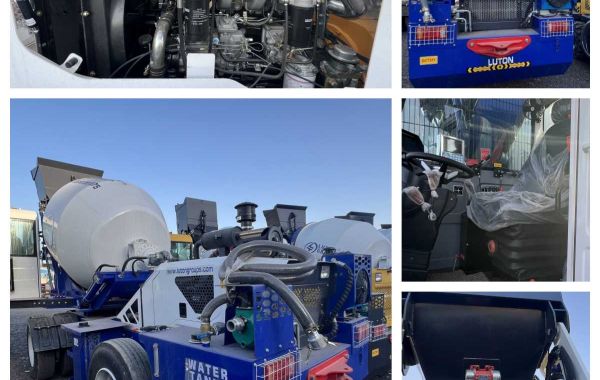In the high altitude area, the natural environment presents a severe challenge to the self-feeding concrete mixing equipment. These challenges include a thin atmosphere, extreme temperature differences and complex geology. In order to meet these special needs, manufacturers have made a series of innovations and optimizations in the design of self-feeding concrete mixing equipment. This article will introduce these special designs and configurations in detail, and illustrate their practical application effect through a concrete case.
Special Design And Configuration
- Engine and Power System Optimization
At high altitudes, the power of the engine decrease significantly due to the thin air. For this reason, self-feeding concrete mixing equipment is often equipped with specially optimized engines, such as turbocharged diesel engines, to improve air intake and combustion efficiency in thin air. In addition, the power system has been adjusted accordingly to ensure that the equipment can maintain good power performance at high altitudes.
- Enhanced Cooling System
The temperature difference between day and night at high altitude is large, which puts higher requirements on the heat dissipation system of the equipment. To address this challenge, self-feeding concrete mixing equipment is often equipped with enhanced cooling systems, including larger radiators, more efficient fans, and more advanced cooling materials. These designs help ensure stable operation in extreme temperature conditions.
- Plateau Type Electrical Components
Due to the thin air and low oxygen content at high altitudes, common electrical components are prone to performance degradation or failure. Therefore, the self-feeding concrete mixing equipment usually uses plateau type electrical components, such as plateau type contactors, relays, etc. These components have higher pressure and temperature resistance and able to maintain stable electrical performance at high altitudes.
- Intelligent Control System
In order to improve the operation convenience and operation efficiency of the equipment, the self-feeding concrete mixing equipment is usually equipped with an intelligent control system. These systems use sensors and computer algorithms to monitor the operating status of the equipment and the quality of the equipment as needed. This not only improves the automation of the equipment, but also ensures the stability and reliability of the concrete quality.
Application Of Special Materials
At high altitudes, the material choice of the equipment is also crucial. In order to cope with extreme climatic and geological conditions, self-feeding concrete mixing equipment usually uses high-strength, corrosion-resistant materials, such as stainless steel, alloy steel, etc. These materials have good wear and corrosion resistance, which can ensure long-term stable operation of equipment in harsh environments.
- Case Introduction
Case: A Highway Construction Project In Xizang Province
In a highway construction project in Xizang Province, due to the high altitude and bad natural environment of the project site, high requirements are put forward for self-feeding concrete mixing equipment.In order to ensure the smooth progress of the project, the project team selected specially designed and configured self-feeding concrete mixing equipment.
The unit is equipped with a turbocharged diesel engine and enhanced cooling system to maintain stable power performance and heat dissipation at high altitudes. At the same time, the equipment also uses plateau type electrical components and intelligent control system to ensure the reliability of the equipment and the convenience of operation.
During the construction process, the equipment has shown excellent performance and stability. Even in extreme weather conditions, the equipment can still maintain a good operating condition, ensuring the continuous supply of concrete and stable quality. In addition, the intelligent control system of the equipment also greatly improves the construction efficiency and reduces the manual operation cost.
In the end, the project successfully completed all construction tasks and was highly praised by the owner. This fully proves that the application effect of specially designed and configured self-feeding concrete mixing equipment in high altitude area is remarkable.
In all, self loading concrete mixing equipment at high altitudes faces many challenges, but with special design and configuration, these challenges can be effectively solved. This paper introduces these special designs and configurations, and illustrates their practical application effect through a concrete case. It is hoped that these information can provide useful reference for construction projects in high altitude areas.







